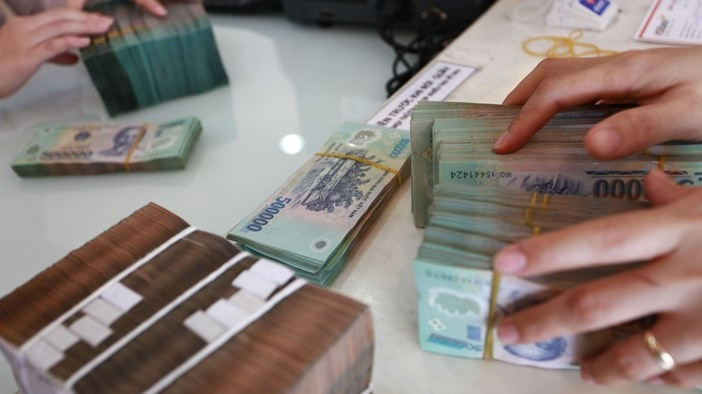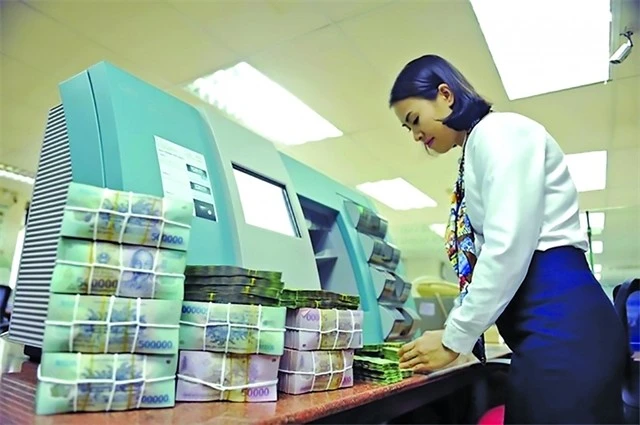According to Fitch Solutions’ fresh calculations, Vietnam will see a larger fiscal deficit in 2022 than in 2021, because of temporary tax cuts, which will affect the state budget’s revenue growth, while increased infrastructure-related expenditures will also boost the state budget spending.
“We at Fitch Solutions expect Vietnam’s primary fiscal deficit to widen from 4% of GDP in 2021 to 4.7% of GDP in 2022, from our prior forecast of 3.8%. That would be the largest shortfall since 2013, but well below the deficit limit of 5.1%, as announced by the government in 2022,” stated Fitch Solutions. “Meanwhile, we forecast that the overall general government deficit will widen from 7 to 7.5% of GDP.”
Fitch Solutions ascribed its forecast of Vietnam’s fiscal deficit widening this year to many factors, with the biggest one being the Programme on Socio-Economic Recovery and Development for 2022-2023, backed by an ongoing monetary and fiscal package.
The package, adopted by the National Assembly (NA) months ago, is estimated at 4.1% of GDP or around 15 billion USD.
The 15 billion USD policy covers 2 billion USD earmarked for buying vaccines and medical equipment. The remaining 13 billion USD includes two packages, with one valued at 5.43 USD billion and the other worth 7.65 billion USD.
These packages will be used as a focus for developing digital and physical infrastructure, including interest rate subsidies for household businesses and enterprises, and the possible extension of loan forbearance and other regulatory measures as needed. Besides that, a big reform agenda is expected to cover climate change, innovation, digital transformation, financial inclusion, business environment, education and training, as well as the labour market.
Notably, fiscal measures have been introduced to assist the economy, including a 1-year reduction in the VAT rate, from 10 to 8% which has been in place over the past several months, helping reduce burdens for enterprises and people.
According to Fitch Solutions, this implies a major reduction in overall tax revenues, since VAT typically helps to fund one-third of total government tax revenues – the largest share among all other components.
Since March 2022, the Vietnamese government has fully opened its doors to the world, with a strong economic recovery expected to help provide an offsetting boost to tax collections.
“We predict that total state budget revenue will grow by as much as 3% in 2022, which is a significantly slower pace of growth than the pre-pandemic average of 13%, but still marks an improvement from contractions recorded in 2020 and 2021,” Fitch Solutions said. “Higher expenditure growth, thanks to increased capital expenditure, will put further pressure on Vietnam’s fiscal position.”
Ensuring state budget
The General Statistics Office (GSO) reported that in the first seven months, total state budget revenues are estimated to be 47.54 billion USD – up 18.1% year-on-year, and total state budget spending is estimated to stand at 36.64 billion USD – a year-on-year increase of 3.7%. This has led to a 7-month budget surplus of 10.9 billion USD.
Almost all revenues for the state budgets have expanded year-on-year. For instance, the revenue from crude oil exports reached 1.87 billion USD, increasing 91.6% as compared to that in the corresponding period of 2021.
In a specific case, Vietnam Oil and Gas Group (PetroVietnam) has reported that its 7-month exploitation of crude oil touched 6.38 million tonnes, tantamount to 73% of the 2022 plan. Its 7-month consolidated revenues hit 23.81 billion USD, accomplishing 98% of the year’s plan and up 56% year-on-year. PetroVietnam’s 7-month contribution to the state budget is estimated to be 3.46 billion USD, a year-on-year rise of 47%.
At present, PetroVietnam’s consolidated assets are valued at approximately 41 billion USD, its equity is estimated to be worth around 21 billion USD. From 1986 to 2020, PetroVietnam’s total revenues hit nearly 400 billion USD, with a contribution of more than 110 billion to the state budget.
However, forecasting that the economy will face more difficulties this year that may cause issues for state budget revenues, the legislature in February 2022 approved a scheme on raising the state budget deficit between 2022 and 2023, by an annual average rate of 1-1.2% of GDP, with a maximum permitted sum of 10.43 billion USD.
In turn, the rate is 1.1% of GDP this year, with a maximum amount of 4.47 billion USD. The government will have the country’s state budget plan for next year which will be submitted to the NA for discussion and approval.
This plan is part of the 15 billion USD monetary and fiscal policy, while also being aimed to help boost business and production activities, which will drive the economy to an average 6.5-7% growth rate for 2021-2025 after the economy expanded only 2.58% in 2021.
Last year saw a budget deficit of about 12.46 billion USD, down by 2.48 billion USD as compared to the initial estimates, and equivalent to 3.41% of realised GDP of 365.21 billion USD.
Public debt controlled
While the wider fiscal deficit is expected to increase Vietnam’s debt burden, debt-to-GDP will remain contained.
Fitch Solutions forecast debt-to-GDP of 57% in 2022, below the country’s 2016 high of 63.7% and the new, lower statutory limit of 60%, set by the government in 2021. Furthermore, the country’s favourable debt dynamics will continue to support fiscal sustainability.
According to Fitch Solutions, over 80% of government debt is denominated in local currency, suggesting that Vietnam is well positioned to withstand any unexpected shocks to the exchange rate. Additionally, an elongated maturity profile will limit rollover risk and offers an additional layer of stability, with a weighted average maturity of 11.1 years, and only around 5% of outstanding government debt maturing over the next two years.
Vietnam’s Ministry of Finance reported that as of December 31, 2021, the economy’s public debt was equivalent to 43.1% of GDP, while the government’s debt was 39.1% of GDP, and the nation’s foreign debt was tantamount to about 38.4% of GDP. These rates were all lower than the permissible limits set by the legislature - 60, 50, and 50% of GDP, respectively, and the warning levels are 55, 45, and 45% of GDP, respectively.
According to the International Monetary Fund, Vietnam’s public and publicly guaranteed (PPG) debt is estimated at 39.7% of GDP in 2021. Under IMF staff’s baseline projections, PPG debt would increase to 40.5% of GDP in 2022 before stabilising at 40.6% of GDP over the medium term. Staff continues to assess the debt sustainability risk as low to moderate.
















